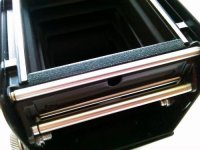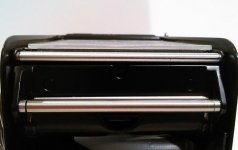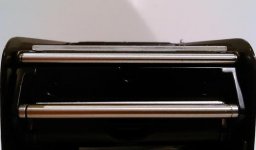robdeszan
Member
Hi All,
I've noticed a certain pattern emerge on negatives taken with my Rollei: frequently, when I generously expose top of the frame (typically sky) the bottom of the next frame will get a faint, slightly brighter stripe.
I've ruled out processing errors (such as development or scanning) and it is too defined to be a light leak. It does not matter if the frames are taken immediately one after another or a week apart, or whether it is the beginning, middle or end of film roll either.
The one pattern has been the preceding bright frame.
Saying that, occasionally the stripe does not occur at all, despite the previous frame being bright and it can vary in height - anywhere between 2 to 6mm in height.
On consecutive frames with bright sky, the height will generally alternate: wider stipe > narrower stripe > wider > narrower etc.
This makes me wonder whether it is somehow related to the cameras mechanics?
Has anyone came across (and resolved!) this issue? Am I missing anything (I do tension the backing paper for film loading and feed it correctly underneath the film-sense roller)?
I have attached two representative examples, one with a smaller stripe, the other with a wider variety - the rest of the frame included for proportions / reference. Ilford HP5 at 400iso.
Thanks,
Rob
I've noticed a certain pattern emerge on negatives taken with my Rollei: frequently, when I generously expose top of the frame (typically sky) the bottom of the next frame will get a faint, slightly brighter stripe.
I've ruled out processing errors (such as development or scanning) and it is too defined to be a light leak. It does not matter if the frames are taken immediately one after another or a week apart, or whether it is the beginning, middle or end of film roll either.
The one pattern has been the preceding bright frame.
Saying that, occasionally the stripe does not occur at all, despite the previous frame being bright and it can vary in height - anywhere between 2 to 6mm in height.
On consecutive frames with bright sky, the height will generally alternate: wider stipe > narrower stripe > wider > narrower etc.
This makes me wonder whether it is somehow related to the cameras mechanics?
Has anyone came across (and resolved!) this issue? Am I missing anything (I do tension the backing paper for film loading and feed it correctly underneath the film-sense roller)?
I have attached two representative examples, one with a smaller stripe, the other with a wider variety - the rest of the frame included for proportions / reference. Ilford HP5 at 400iso.
Thanks,
Rob















